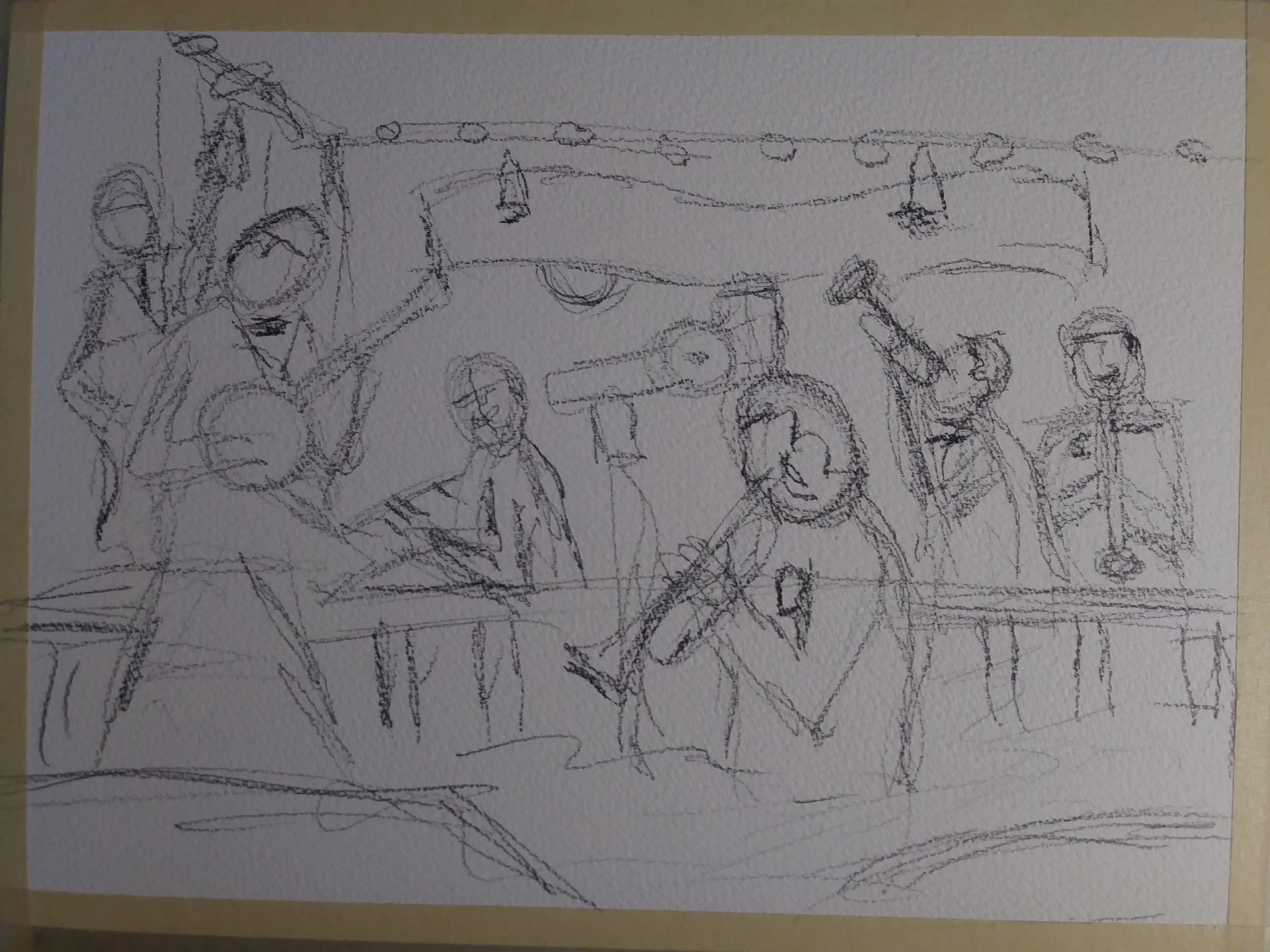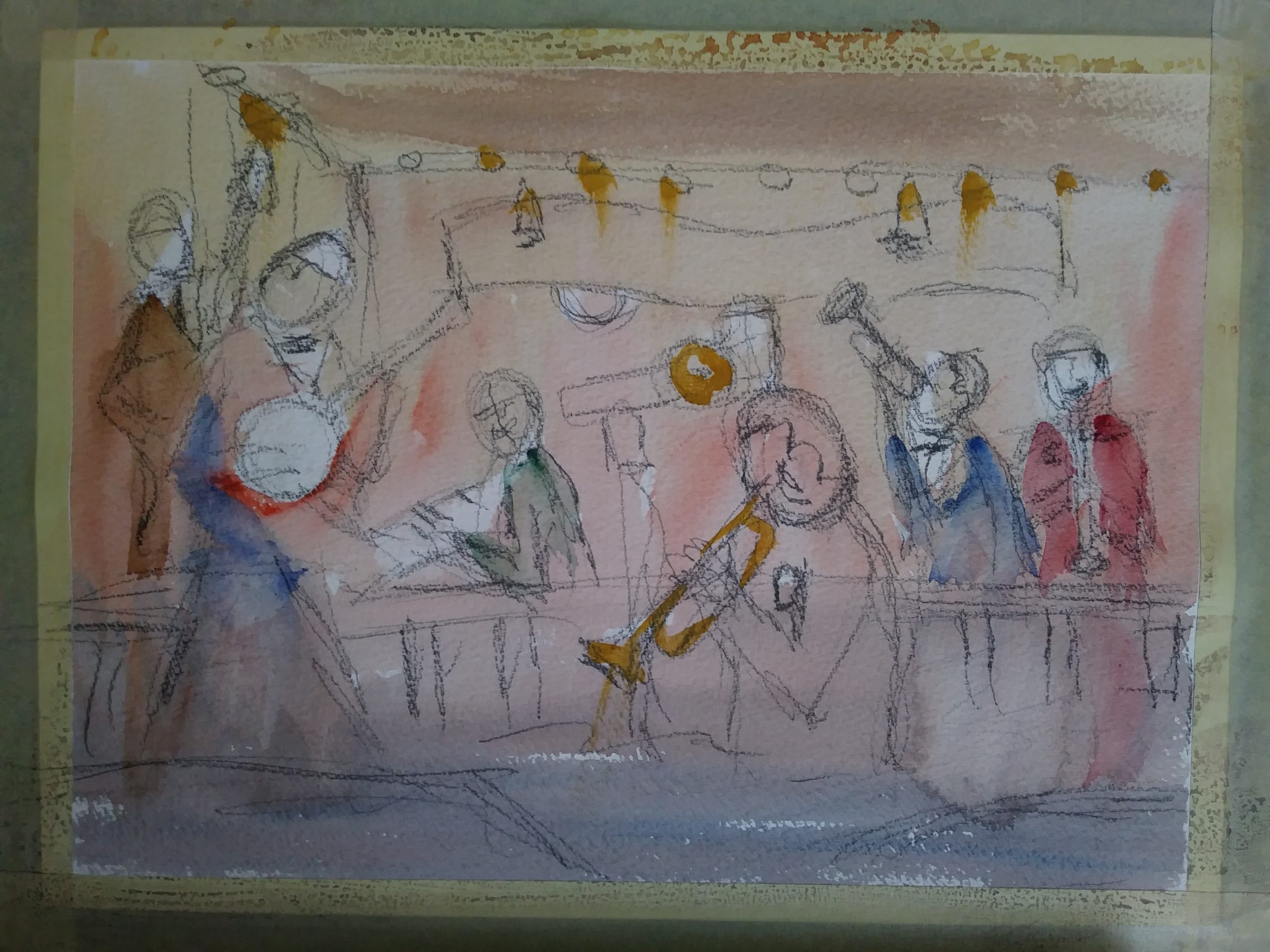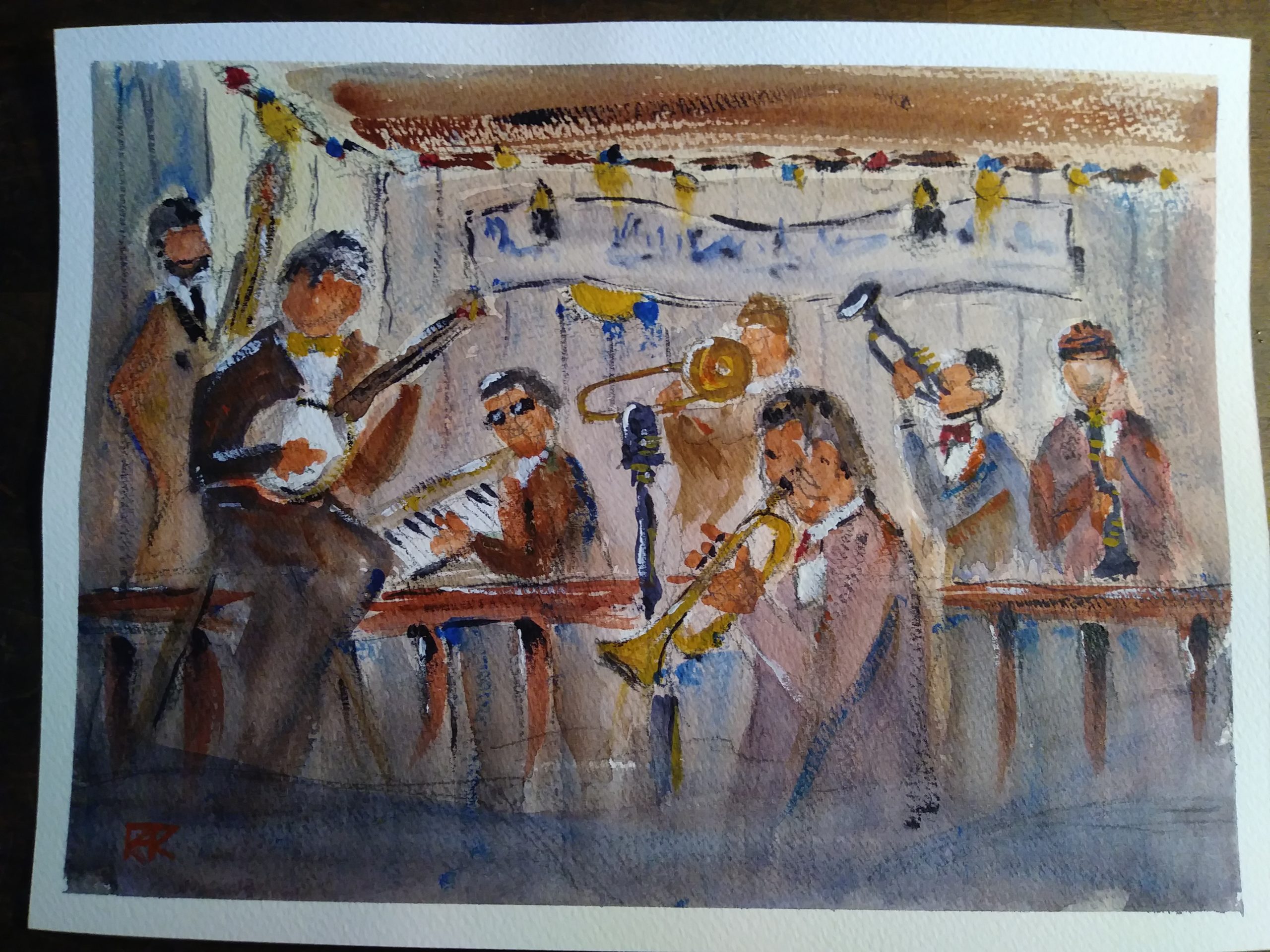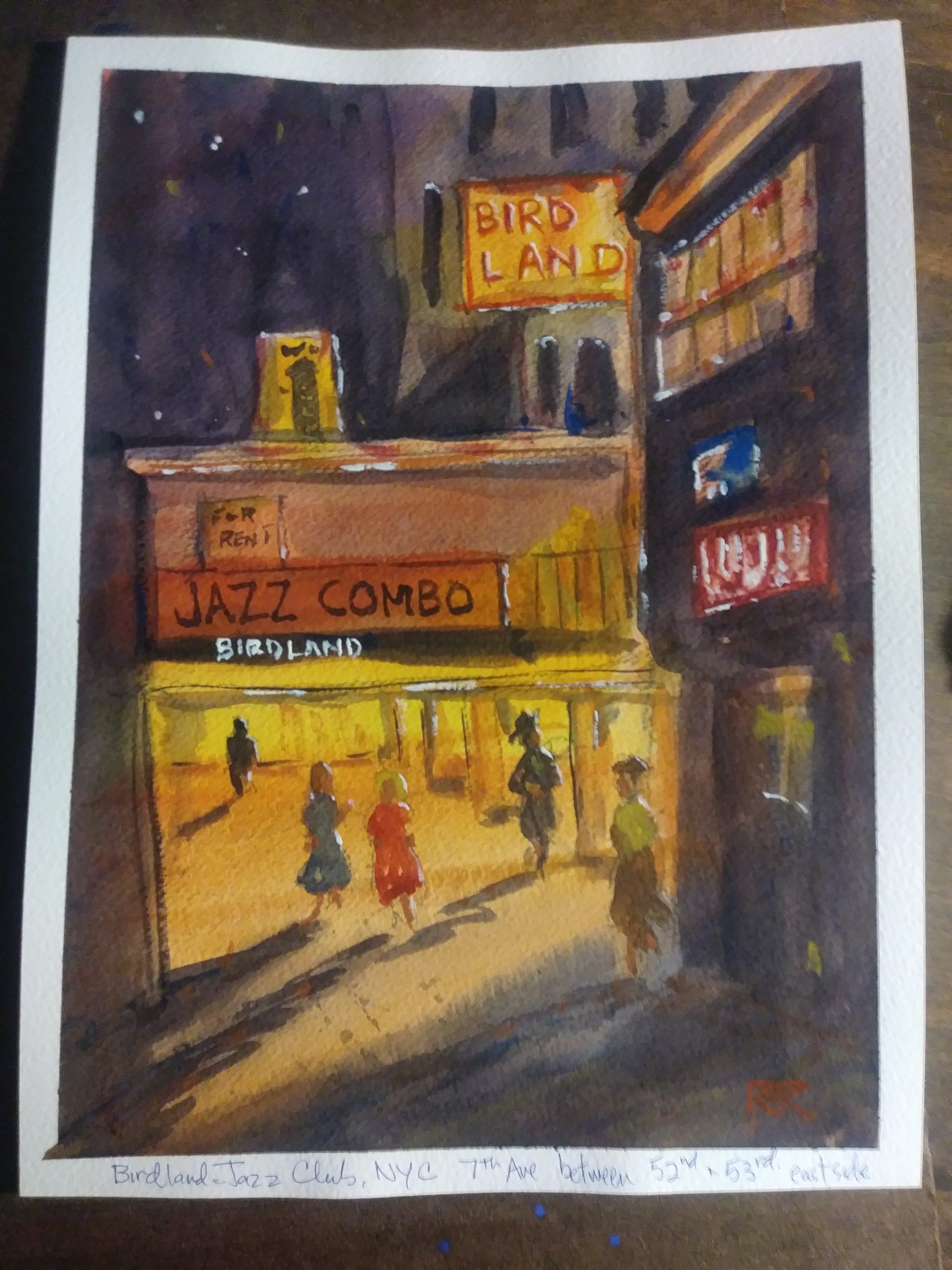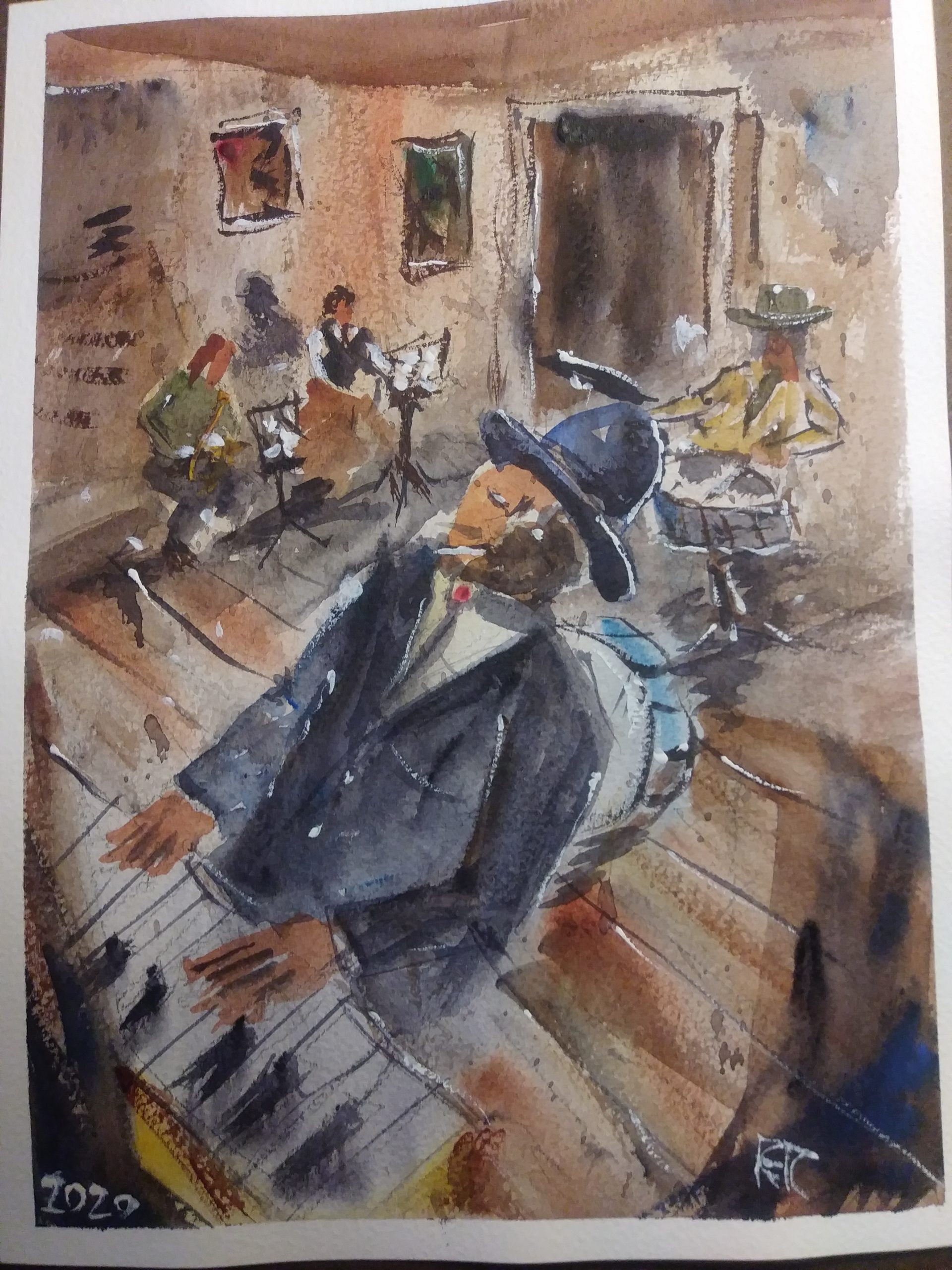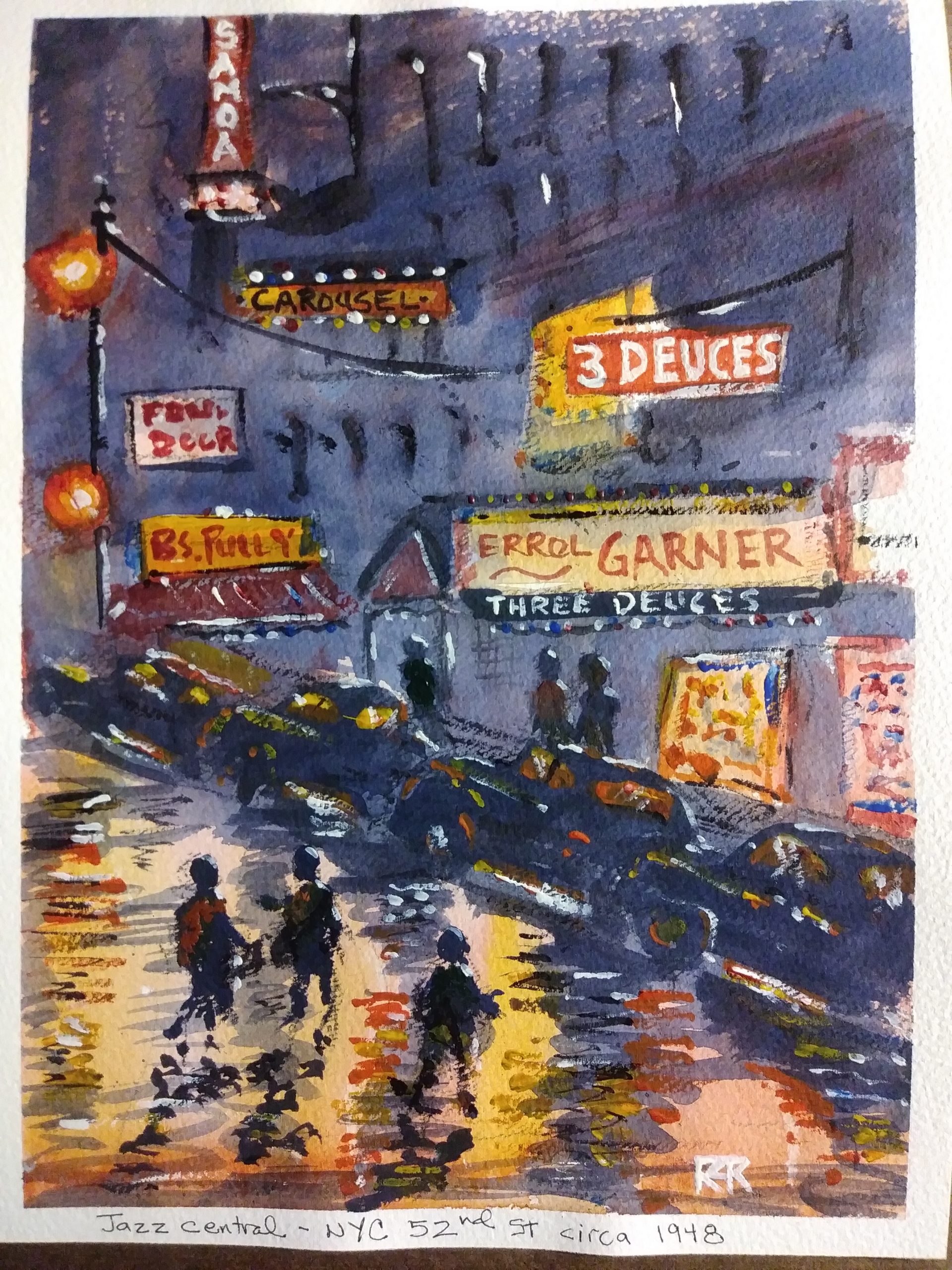When I was in the fifth grade, my parents informed me that I would be learning to play an instrument. I was given the choice of which instrument. My older brother had chosen the cornet and I suppose I wanted to be different, so I pointed to the gleaming trombone. The store manager let me hold it but my arm was too short to extend the slide very far. So I too settled on the cornet.
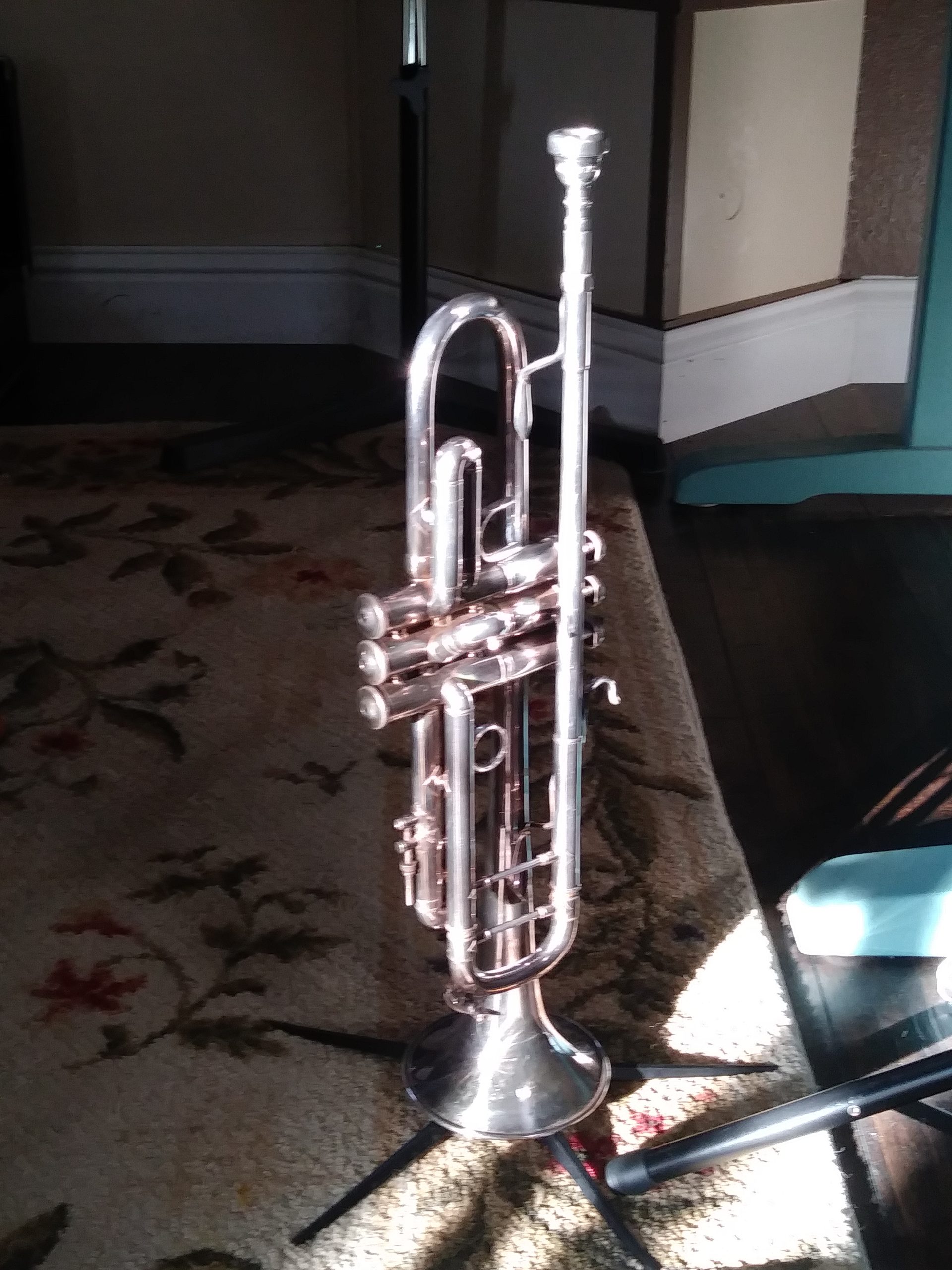 And I am so glad I did. The trumpet has been a life-long friend. I have met many people, travelled to places, and grown in my appreciation of different kinds of music. Later in life, I discovered jazz. When I got remarried at age 65, my daughter suggested I play my horn at our wedding reception. My wife to be reminded me that we had a small jazz combo in our church which might be available. Perhaps they would allow me to play along, which I did for three numbers. I was hooked. Since then, I have continued with the group, now called the Turlock Jazz Collective.
And I am so glad I did. The trumpet has been a life-long friend. I have met many people, travelled to places, and grown in my appreciation of different kinds of music. Later in life, I discovered jazz. When I got remarried at age 65, my daughter suggested I play my horn at our wedding reception. My wife to be reminded me that we had a small jazz combo in our church which might be available. Perhaps they would allow me to play along, which I did for three numbers. I was hooked. Since then, I have continued with the group, now called the Turlock Jazz Collective.
I have struggled to depict in watercolor the liveliness of the small cluster of players who feed off one another’s sound and energy. In this collection, I share some original watercolors of jazz combos. I hope you enjoy them.
When I first started playing with our combo, I did not realize there was as much fluidity to the music even during a song. I learned there is a basic melody called the “head,” which is played through once or twice, after which some of the instruments improvise. They may play something similar or very different from the melody line. This was a challenge for me at first, but also liberating. I am still definitely learning more about improvisation.
Since this is the art section of my website, I thought I would show you the development of one of the paintings. I am indebted to several art instructors on YouTube who share their process. This painting developed from a sketch taken from a photo I saw on the internet. I usually end up rearranging things a bit, according to how I think I can paint them. I like these jazz paintings to look a bit crowded, because it seems there is rarely enough room for everything. There is always chatter in the background because jazz has a way of putting people at ease and they begin talking with friends.
New Orleans is considered the birthplace of jazz. The medium grew out of the angst of the black experience in America. With time, it became popular in the broader population, and Chicago and New York City became big time jazz cities. 7th Avenue between 52nd and 53rd on the East Side was a hub of jazz clubs back in the day. So I thought I should try to paint some of those places too. This is the Birdland Jazz Club in NYC.
This is Thelonius Monk, whose original piano playing stretched jazz into new sounds.
In watercolor, you lay down at least two “washes.” That is, you first take a larger brush and fill out the major spaces with the background colors you will build on (after it dries). Often you want light colors to be distinct so that later they will stand out; in this painting, I wanted the yellow from the overhead lights to be prominent. The second wash adds definition by bringing in some darks, but not too dark… there is more dark pigment to come. As you progress, you add sharper shapes and lines. I prefer a “loose” style, leaving some imagination to the viewer while also depicting something enjoyable to look at. This one turned out better than I deserve!
Here’s a club called the Three Deuces on 52nd in NYC. A hopping place!
And here’s 14 seconds of raw talent to send you off! (check your volume first)

